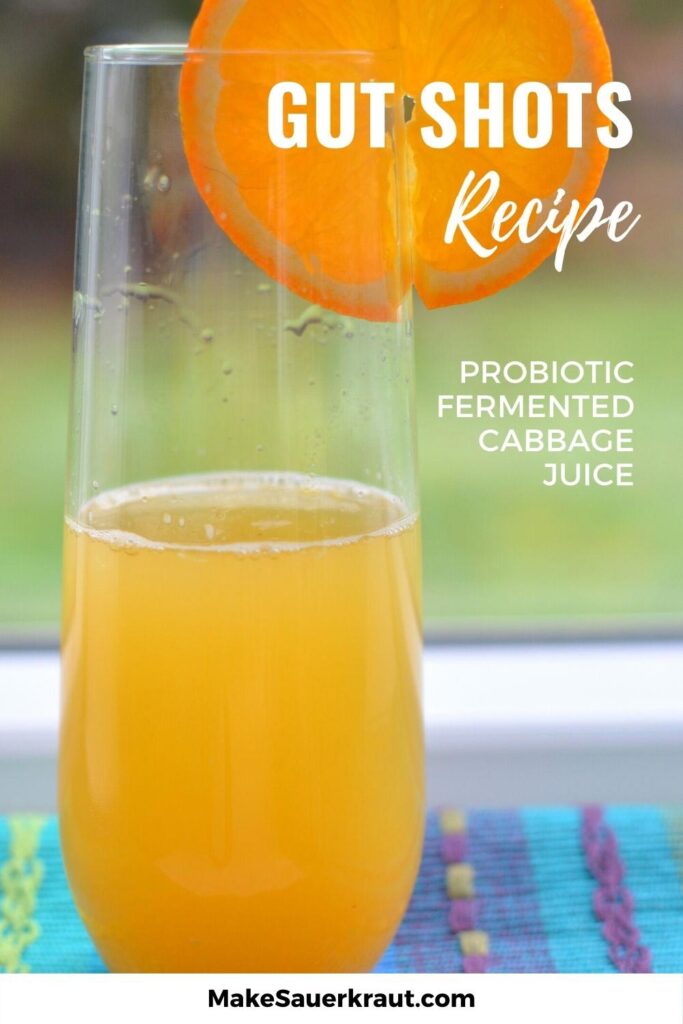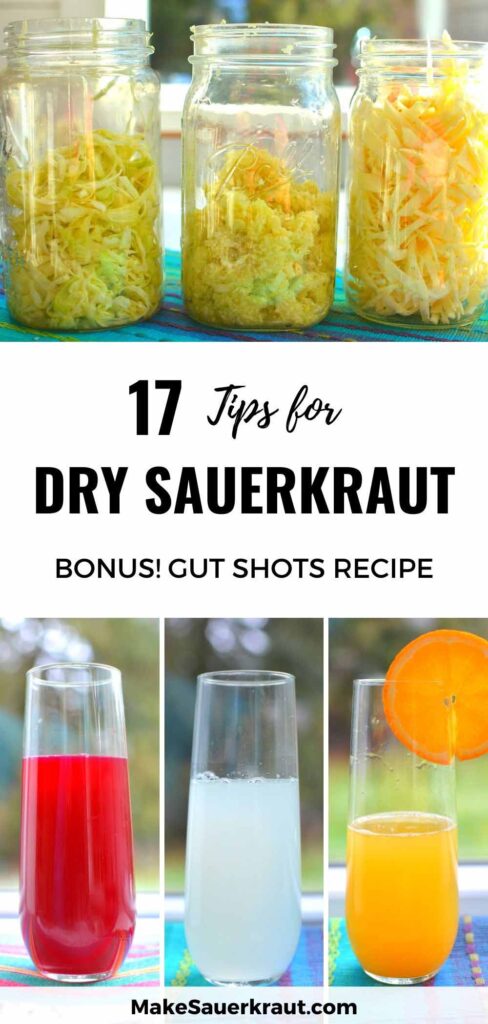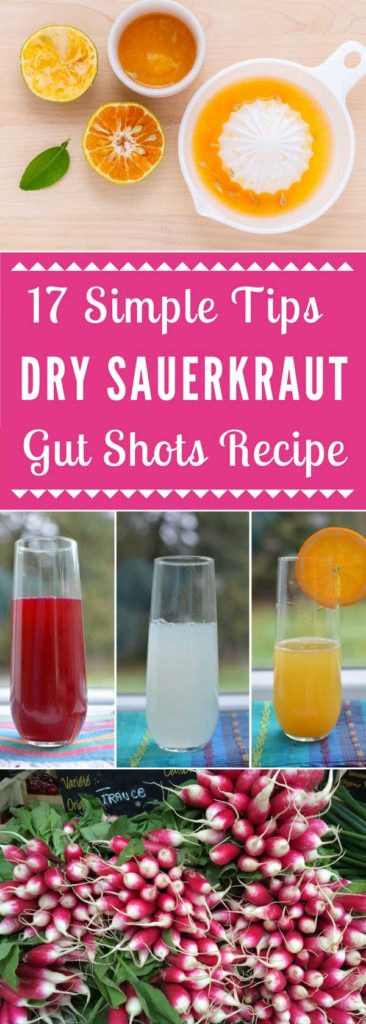Have you ever ended up with a batch of dry sauerkraut?
And wonder what you might have done wrong?
We’ve all been there.
It’s the…
Case of the Disappearing Brine! 😕
Good news.
I have 17 tips to help you understand what is causing that dry sauerkraut and what – if anything – to do about it.
Dry Sauerkraut During Fermentation and Storage
When do you need to worry about brine levels and what should you do? What are we dealing with? We will look at brine levels during 3 different periods:
- During the first stage of fermentation (the first 3 days) when it is important to keep everything below the brine.
During this stage, the bacteria L. mesenteroides are producing lactic acid, acetic acid (vinegar), ethyl alcohol and mannitol which all contribute to the characteristic flavor of high-quality sauerkraut. The L. mesenteroides also produce carbon dioxide (CO2), hence the bubbles you see floating to the surface along with brine being pushed out of the jar. - During the next two stages of fermentation, the bacteria L. plantarum are eating the sugar in the cabbage and vegetables and producing lactic acid (days 3-16). The lactic acid that acts as a preservative, supports digestion, inhibits the growth of harmful bacteria, increases the bio-availability of Vitamin C, among other jobs. And, the L. pentoaceticus are “finishing-off” the sauerkraut (days 16-20) by lowering the acid level a slight bit more. This is a quieter stage and when brine levels usually fall and you sauerkraut may look dry.
- During storage, the brine is pulled back into the cabbage due to the colder temperatures of your refrigerator. Remember how we used salt to pull the water out of the cabbage to make our brine? The cabbage takes it back. Darn, that cabbage. Again, dry sauerkraut.
Onto the tips. But first…
Don’t feel you need to complicate fermentation and go out and purchase the right gizmo. Be OK with simple solutions.
Yes, some of these tips for dealing with dry sauerkraut take advantage of new fermentation products on the market. Often, I ask myself if they really do make a big difference for I find comfort in the simplicity of my little jar as a weight and my white plastic lid. They do work, maybe not 100% but close enough for me… most of the time. I’m not putting together a post like this to sell products but to answer reader questions and satisfy my curiosities. Onward!
Start with Plenty of Brine
Do you notice that brine production varies from batch to batch of sauerkraut? Dry sauerkraut with one batch? Plenty of brine with another batch?
If you can’t quite put your finger on why, here are a few ideas to consider.
1. Use Fresh Ingredients
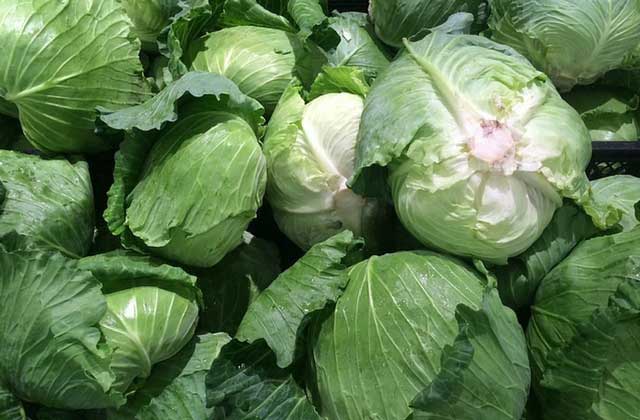
Most of the cabbage you will see at the store for purchase was harvested in October and November and then kept in a controlled storage environment to prevent moisture loss and shrinkage. Thank goodness for us Fermentistas, cabbage stores well. 🙂
Even though cabbage is approximately 92% water, if it is June and you’re about to make a batch of sauerkraut, that cabbage has most likely been in cold storage for 6 months and will have lost some of its moisture. Loss of moisture means less brine. The closer to harvest that you purchase your cabbage – and make sauerkraut – the more brine it will produce and the less chance of dry sauerkraut.
Check this Cabbage Buying Guide to ensure top quality cabbage for your sauerkraut.
2. Store Cabbage Properly to Preserve Quality
Cabbage stores well in the hydrator (crisper) drawer of your refrigerator.
Put the cabbage in a plastic bag to help retain moisture if it will be more than a few days before you will be using it. Any vents on the drawer should be closed to keep moisture in the drawer.
3. Select the Right Variety of Cabbage
If you’re lucky to be growing your own cabbage – or have a good relationship with the farmer you are buying it from – select cabbage varieties that work best for sauerkraut and are harvested in early fall after the first frost. These varieties (Krautman, Danish Ballhead, and Premium Late Dutch to name a few) are generally later maturing varieties with higher sugar content. More sugar = more food for the lactic-acid bacteria. 🙂
Realize, also, that there are two types of cabbage: winter cabbage and summer cabbage. Winter cabbages are planted in late summer and harvested in early fall, ideally after the first frost. These prized cabbages have tight heads, are harder, have thicker leaves and higher moisture content than summer cabbages.
4. Include a Watery Vegetable in Your Sauerkraut Recipe
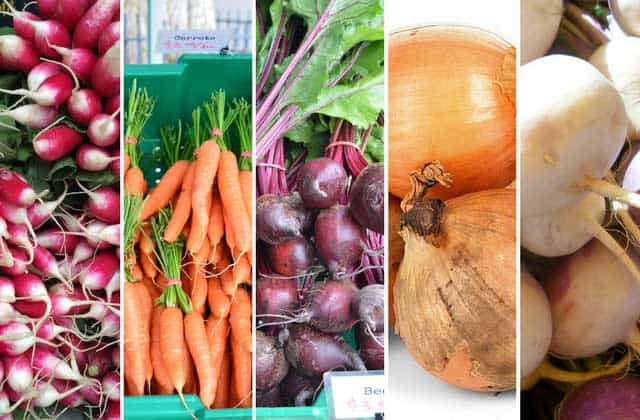
Grated radishes, carrots, beets, thinly sliced onions, or turnips will all give off a lot of liquid and help make copious brine.
5. Add Liquid
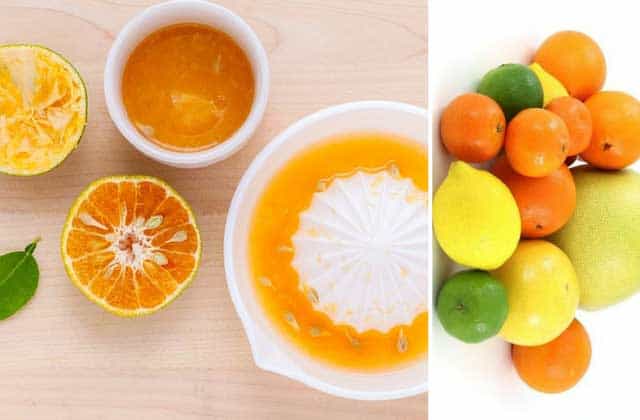
This tip comes from Kirsten and Christopher Shockey, authors of my favorite fermentation book: Fermented Vegetables.
“A few tablespoons of lemon juice, bottled or fresh, can save the day. The lemon flavor will be subtle, as it gets lost in the acidity that you are creating with the fermentation. If you want to taste the lemon, add the zest also. You can also add fresh-squeezed orange, lime or grapefruit juice.”
They recommend AGAINST adding saltwater – brine – to dry sauerkraut as they have found that it can cause discoloration and possible mushy kraut.
NOTE: They are right. I added fermented brine – as discussed below – to my finished sauerkraut before putting it into the fridge for storage. I am just now eating from some of those jars. Watery, mushy sauerkraut. (December 4, 2017) 🙁
6. Slice Cabbage Thinner
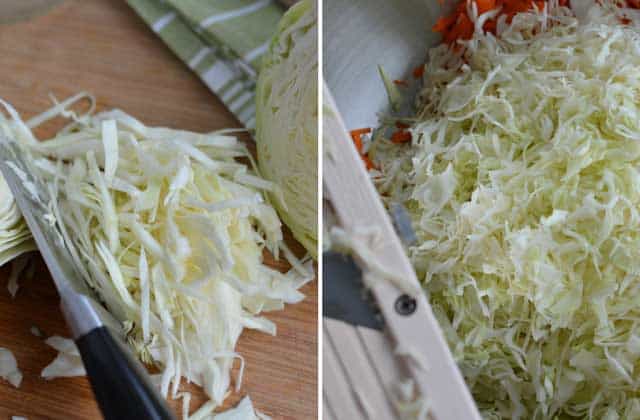
Thin thread-like cuts of cabbage make for easy brine production along with overall improved quality of the finished product.
Compare the thickness of the cabbage of the left – that I sliced with a knife – to the cabbage on the right that I sliced with my mandolin.
Why thread cuts are better:
- Expose more cabbage cells.
- More exposed cabbage cells release more fluid and more lactic-acid bacteria.
- More lactic-acid bacteria creates more lactic acid.
- Lactic acid helps to maintain a good pH which preserves flavor, texture, and color.
What is the best way to get those thread cuts?
A mandolin! Here on my Fermenting Supplies page are a few to choose from.
7. Give Your Freshly Salted Cabbage a Bit of Time
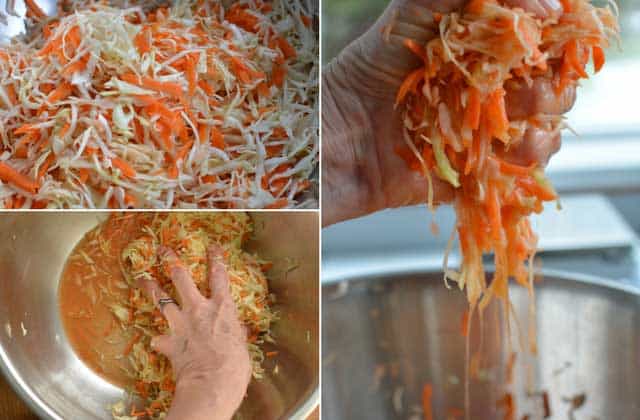
Once I have added salt to my cabbage and then mixed it well, I leave it be for 20-30 minutes while I clean up my kitchen and get a few other things done. When I return, I find that very little “massaging” has to be done to get a nice puddle of brine in the bottom of my bowl.
If you still don’t have enough brine, give it another hour or so and then consider adding a watery vegetable or a bit of citrus juice as suggested above.
Retain Brine During Fermentation
During the first few days of fermentation, the bacteria that go to work for you create a lot of CO2 or air bubbles that get trapped in your packed ferment. If they can’t make their way up and out of the ferment and then out of the jar, the fermenting mass expands and forces brine out of your jar. Brine that is better off kept in the jar so that there is less chance of ending up with dry sauerkraut.
To retain brine during fermentation and prevent dry sauerkraut:
8. Understand How Temperature Affects Brine Levels
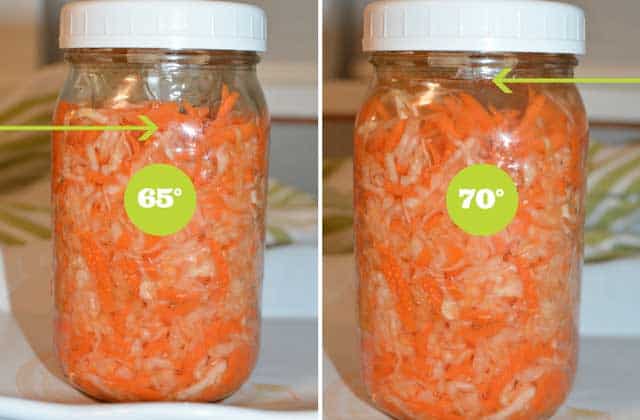
You can use your jar of fermenting sauerkraut as a thermometer! 😀
The picture of the jar on the left was taken early in the morning when my house was a little cooler. The picture on the right? Three hours later after the house had warmed up.
9. Leave Enough Room in the Jar for Expansion
When packing your sauerkraut mixture into the jar, leave a good 2 inches of headspace. This will give room for the sauerkraut and brine to expand into.
10. Use a Fermentation Weight that Uses Little Space
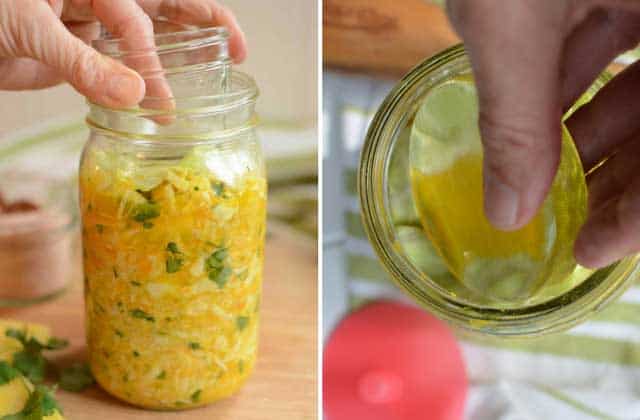
I still recommend a little jar as a “weight” to keep things simple for first-time fermenters. However, one of its drawbacks is that it uses up space that would be better left for the brine.
This is where the weight and size of the Pickle Pebble comes in handy, though I’m not convinced it is always heavy enough. Some batches stay under the brine during the entire 4-week fermentation period, others look dry after the first week or so. But… the Pickle Pebble is simple. It is made from glass. It doesn’t retain odors.
11. Use a Fermentation Gate: The Mighty Microbes Can’t Open a Gate
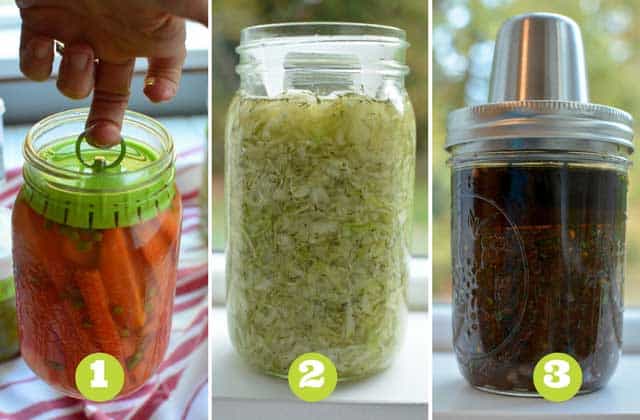
“Fermentation Gate” is a term I’m starting to use to describe something “locked” into the neck of your jar that can’t be moved by the force of the expanding sauerkraut mixture. The gate stays locked and your ferment then has to remain in place below the brine (on the other side of the gate) with CO2 bubbles escaping. 😉
Image 1: The Pickle Pusher is not going anywhere. The weight of the jar of carrot sticks cannot pull the Pickle Pusher out of the jar nor will you ferment be able to expand up past the Pickle Pusher.
Image 2: The ViscoDisc Canning Buddies are held securely in place both by tabs below the neck of the jar and by tabs in the neck of the jar. Your expanding ferment can only expand a bit as the ViscoDisc is stopped when coming in contact with the lid of the jar. This is the same principle as the little jar that I use as a “weight” – actually, it’s a gate – in my recipes.
Image 3: The Kraut Source Fermentation Lid comes with a stainless steel spring that forces your ferment down into the jar. It can adjust to the level of the ferment. Notice the brine line in the picture? My jar of Raisin Chutney was compressed that far down into the jar by the Kraut Source plate and spring.
I’ve tested three different fermentation gates that all work to prevent the expansion of your ferment. Read my review posts:
Pickle-Pushing No-Float Jar-Packer Review [Ingenious]
ViscoDisc Canning Buddies REVIEW [Simple & Affordable]
Kraut Source Fermentation Lid REVIEW [Solid Design]
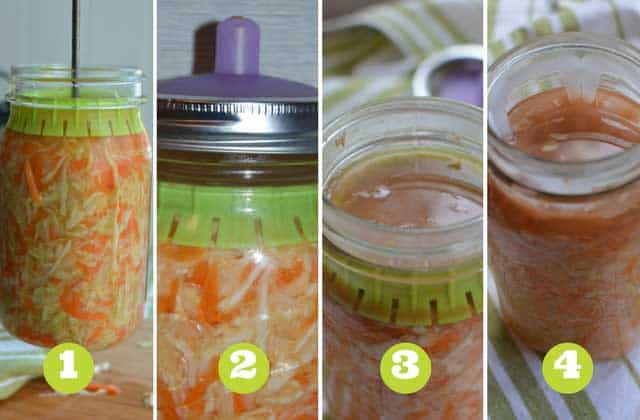
This is my jar of Sweet Garlic SureFire Sauerkraut as it progressed from a freshly packed jar to being moved into the refrigerator.
Image 1: Packet and ready to ferment. Held in the air to show that the Pickle Pusher won’t be going anywhere.
Image 2: Day two of fermentation. Notice the droplet of brine trying to escape the Pickle Pipe? The brine created moved up into the neck of the jar but did not flow out of the Pickle Pipe.
Image 3: Brine coverage at the end of 4 weeks. Everything has stayed below the brine during the entire fermentation process.
Image 4: The Pickle Pipe and Pickle Pusher has been removed and a ViscoDisc Canning Buddies put in place for holding the sauerkraut below the brine during storage. The picture was taken 24 hours after being placed in the refrigerator. The cold of the fridge causes much of the brine to be pulled back into the cabbage.
A Pickle Pusher for a fermentation weight along with a Pickle Pipe for an airlock lid is becoming my favorite fermentation setup. I like the visual feedback you get with the Pickle Pipe. Barometric pressure, along with CO2 gas levels cause the pipe to become concave or convex. A fun way to get feedback on what is going on in your jar.
12. Fiddle with Your Jar
Break all rules about letting air into your jar and find a way to release the trapped air bubbles that are causing your sauerkraut mixture to look dry. When things look dry because your packed mixture is “heaving” – moving up in the jar and/or when the brine looks like it is about to overflow, you can:
- Poke the packed mixture with a wooden skewer.
- Run a knife along the inside edge of your jar.
- Push down on whatever weight you are using.
I don’t have pictures of this but it seems to be most effective during the first week of fermentation when there is more microbial activity from the gas producing bacteria.
13. Vacuum Air from the Jar
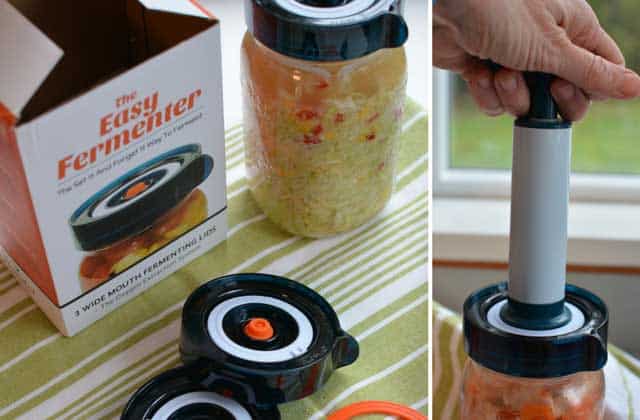
The Easy Fermenter Lid has a small airlock and comes with a vacuum pump. I’m just starting to experiment with this and have yet to completely understand what’s going on. But as you pump (vacuum) the air out of your jar, the brine rises to the surface. This seems to work best during the first week or so. Needs more experimentation.
14. Ferment in a Water-Sealed Crock
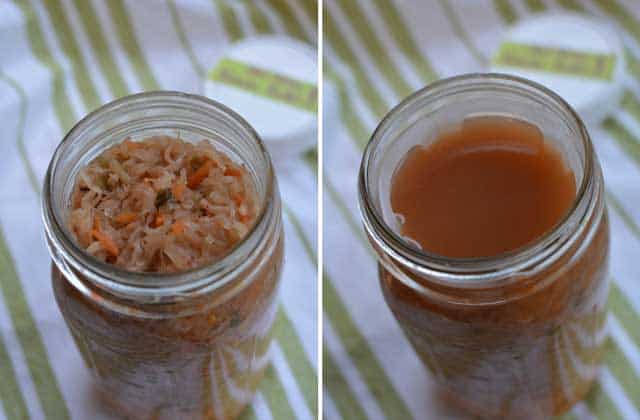
You tend to end up with much more moisture in your finished sauerkraut when fermenting in a water-seal fermentation crock. There is something about the larger environment and the greater amount of microbial activity that takes place.
It is not that I have cups and cups of brine in the bottom of my crock when I’ve finished packing everything into jars, but that the finished product is moister and if I press down on it – plenty of brine easily rises to the surface. Here’s my recipe for fermenting in a crock:
The SureFire Sauerkraut Method… In a Crock: 7 Easy Steps
In the picture, the jar on the left is a batch of Kimchi I fermented in one of my water-sealed crocks. The jar on the right is of all the brine evident after inserting a ViscoDisc. I don’t get this much brine with most of my sauerkraut that has been fermented in a quart (liter) jar.
Due to their affordability and proven track record that they don’t leach nasties into my sauerkraut, I’ll be inserting the ViscoDisc Canning Buddies into my jars before storing.
Add More Brine
When do you add more brine to dry sauerkraut and what type of brine do you add?
Do realize that when you add additional brine to your sauerkraut, you are not only diluting the flavors but you are also upping the sodium levels in the finished product?
To get around the dilution of flavors, I’m using some of the cabbage and vegetable bits leftover from prepping my vegetables to make…
Gut Shots, or fermented cabbage juice.
Not only is it a flavorful brine to add to your dry sauerkraut, but it is also a way to drink your probiotics and obtain similar benefits to eating sauerkraut. A recipe for Gut Shots (beta version 🙂 ) follows this section.
To get around the increased sodium levels in your sauerkraut, I’ve reduced the salt a bit in the Gut Shots recipe.
I’ll have to eat my way through a few jars of my Gut Shots infused sauerkraut before I can give a thumbs up or down on the flavor. So far, so good.
No time to make Gut Shots? Here are the numbers for mixing up a brine:

15. Add Brine 24 Hours Into Fermentation
If you have dry sauerkraut at the end of your first day of fermentation, salt brine or fermented brine (Gut Shots) needs to be added to your jar of fermenting sauerkraut. Check first that your room is not too cold. Remember how brine levels fluctuate with temperature?
16. Add Brine During Fermentation
It’s your call whether you want to add more brine to your sauerkraut between day 7 and the end of fermentation. I’ve never had mold grow on dry sauerkraut that has been fermenting for at least 7 days. A healthy fermentation environment – in which mold should not be able to grow – has already been established.
17. Add Brine Before Putting Jars into Storage
If your sauerkraut looks dry and it’s time to move it to the refrigerator, you can choose to add brine. Or, if it’s been in the fridge for a day or so and all the brine has disappeared, you can add brine to reduce air exposure to the sauerkraut.
You won’t see mold or yeast growth when a properly fermented jar of sauerkraut is stored in your refrigerator, but you may see some oxidation happening – browning or loss of color – in the top inch or so of the packed jar. Oxidation means loss of nutrients, particularly Vitamin C.
With this year’s batch of sauerkraut, I am doing a few things to make sure my sauerkraut is under brine during storage. When fermenting in a jar, I’m using the Pickle Pusher during fermentation, removing that and inserting a ViscoDisc Canning Buddies for storage. If my brine level is not at the jar threads, then I’m adding some Gut Shots brine.
After I eat my way through these jars of sauerkraut, I’ll be able to report back on my findings.
UPDATE: I DID NOT like the texture or flavor of the sauerkraut to which I added Gut Shots brine a year ago. Watery. Soft.
I now DO NOT recommend adding brine to a jar of sauerkraut before storage. Eat your drier jars first or use the tips earlier in this post to make sure you have enough brine to start with. (December 4, 2017)
Gut Shots
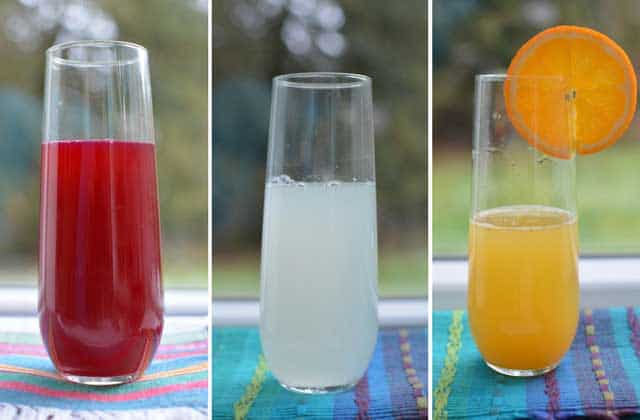
Consider keeping a batch of Gut Shots in your fridge for topping off jars of dry sauerkraut, and…
for sipping their goodness as another way to get fermented foods into your diet.
Gut Shots are a fermented cabbage juice that will not dilute the flavor of your sauerkraut but instead enhance it. At least that’s my plan. They’re easily made with the leftover bits you used to make your sauerkraut.
Here’s are general guidelines for fermenting Gut Shots. Jump to official recipe.
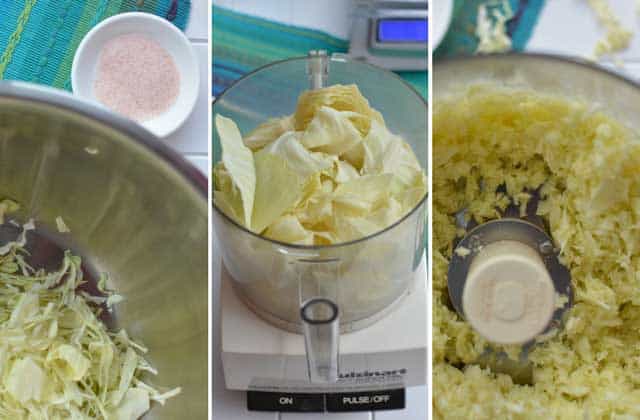
Chop and Salt. In my test recipes, I used 8-12 ounces of sliced cabbage (220-330 grams) and added 2 tsp (10 g) of salt.
NOTE: Salt numbers are based on the amount of water we’re adding and not the weight of the cabbage. This is closer to a Fermented Carrot Sticks recipe, where a brine is poured over vegetables rather than creating our own brine as with sauerkraut.
I prepared the cabbage in three different ways.
ONE: Sliced the cabbage with my mandolin (or knife) and massaged in the salt to create a brine.
TWO: Sliced the cabbage with my knife, packed this into a quart (liter) jar and added the salt to the jar.
THREE: Pulsed the cabbage in my food processor, added the salt and gave it a few quick pulses.
Method TWO did not have as rich of a flavor as methods ONE or THREE.
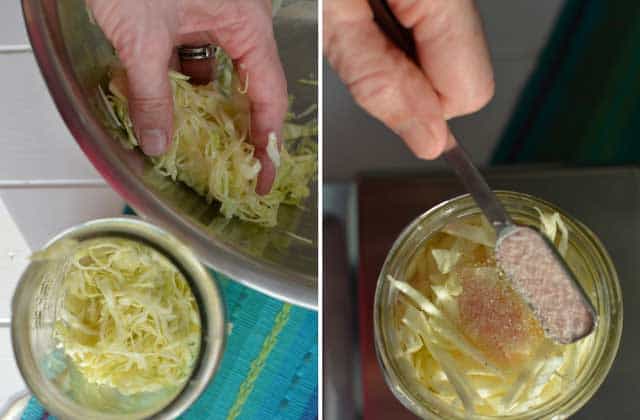
Pack into Jar. I used a quart (liter) jar in my test recipes. It was a bit small for the amount of cabbage used. I would use the same amount of cabbage but instead pack it into one of those tall, 1/2 gallon (2-liter) jars and use 1 tablespoon of salt.
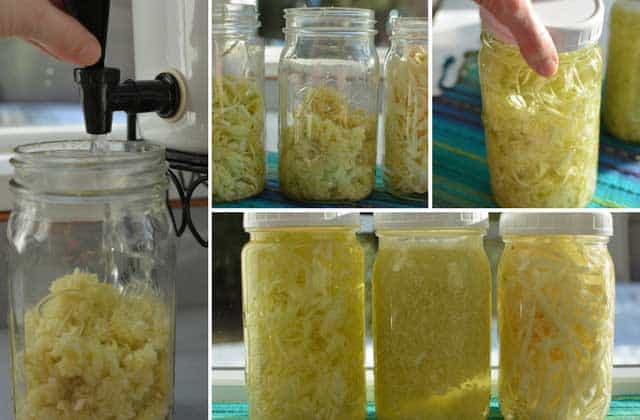
Add Water, Cap, and Ferment. Jar #1 (the first jar in the line up) has the salted and massaged cabbage; #2, the cabbage pulsed in the food processor and, #3 the loosely packed, then salted cabbage. Ferment for 5 days to 2 weeks.
Each Day During Fermentation, mix the contents of your jar. Gently turn upside down letting the bubble rise to the surface then turn back upright. This will prevent any surface molds from growing.
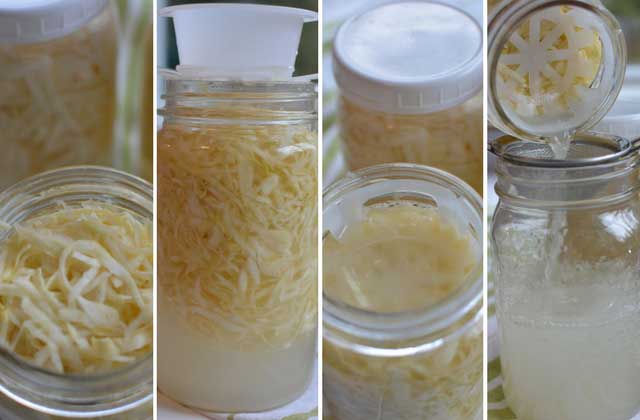
Decant. Strain contents into a clean jar. You’ll see that I added a ViscoDisc Canning Buddies to hold the fermented cabbage in the jar. For future batches, I would insert this at the beginning of fermentation. It does a good job keeping the cabbage below the brine.
Enjoy! Sip at your leisure or add to dry sauerkraut.
P.S. The Ginger Beet Gut Shots – quite delicious – included 2 small peeled and chopped beets and 1 heaping tablespoon of grated ginger. One-half squeezed orange was added to the Orange Gut Shot after fermentation. Just in the glass before drinking. 🙂
Gut Shots Recipe
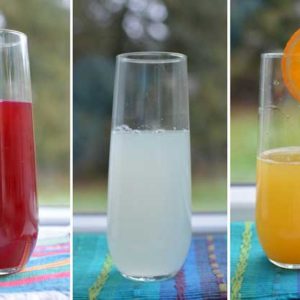
Gut Shots Recipe
INGREDIENTS
- 4-6 ounces (110-170 grams) Cabbage
- 2 tsp iodine-free salt (fine-grain)
- Chlorine-free Water
- 1 Quart (Liter) Jar
- Lid
INSTRUCTIONS
- SLICE approximately 4-6 ounces (110-170 grams) of cabbage.
- CREATE BRINE.Place sliced cabbage in a mixing bowl.Sprinkle with 2 teaspoons of iodine-free salt.Massage gently to create a brine. The cabbage will soften, want to clump together and there will be a small bit of brine in the bottom of the bowl.
- FLAVOR.Feel free to add flavoring ingredients at this time. Mix in one or 2 peeled and roughly chopped beets and one tablespoon of grated ginger is a favorite. Or, try just 1 or 2 finely chopped garlic cloves.
- PACK into a quart (liter) jar.Fill to the bottom of the jar threads with chlorine-free water.Lightly screw on lid.
- FERMENT.Place in jar in a small bowl out for direct sunlight to ferment for 5 days to 2 weeks.
- MIX DAILY.Each day during Fermentation, mix the contents of your jar. (You might want to first tighten the lid.) Gently turn upside down letting the bubble rise to the surface then turn back upright. This will prevent any surface molds from growing.
- DECANT AND STORE.Strain contents into a clean jar. Store in your refrigerator.
- ENJOY!Sip 1/4 cup 1-2 times daily or use to add moisture to dry sauerkraut.
- DOUBLE.Feel free to double the recipe. Roughly double the ingredients and use 1 tablespoon of salt for a 1/2 gallon (2-liter) jar.
Do you have any tricks for dry sauerkraut? Insights? Please, share in the Comments Section.
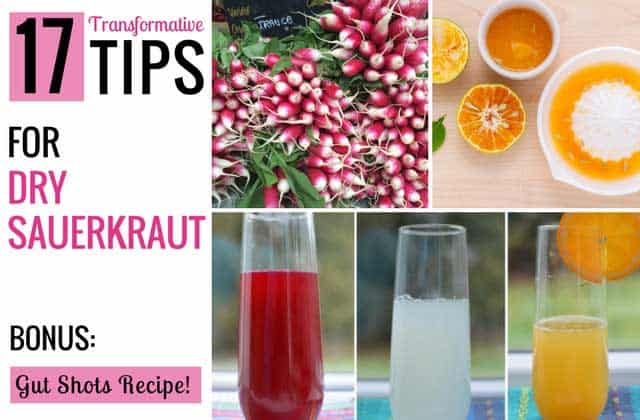
Last update on 2024-07-26 / Affiliate links / Images from Amazon Product Advertising API

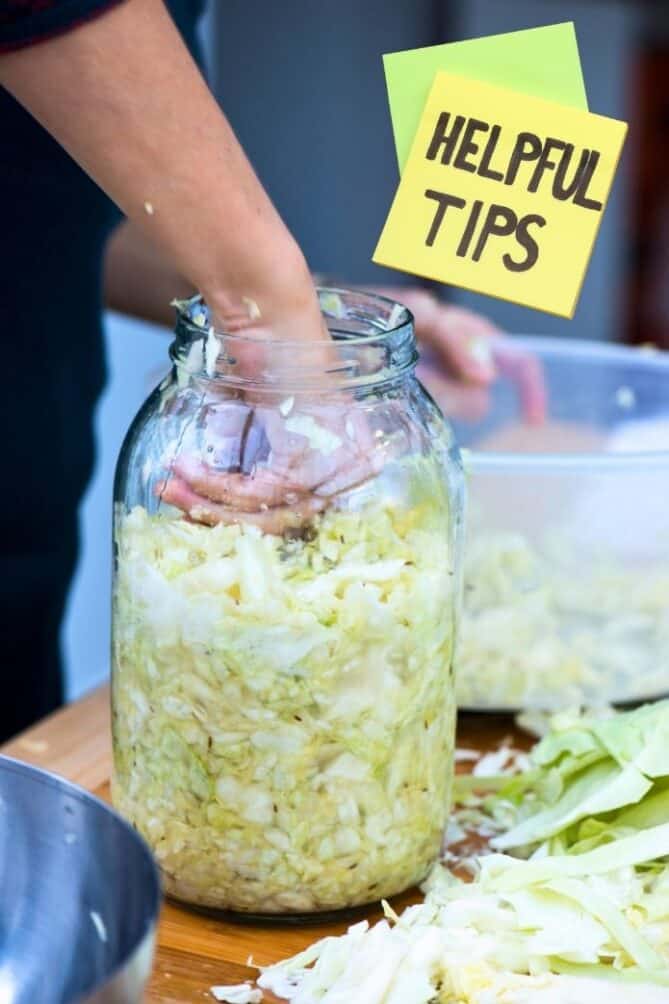

 This post may contain affiliate links which won’t change your price but will share some commission.
This post may contain affiliate links which won’t change your price but will share some commission.